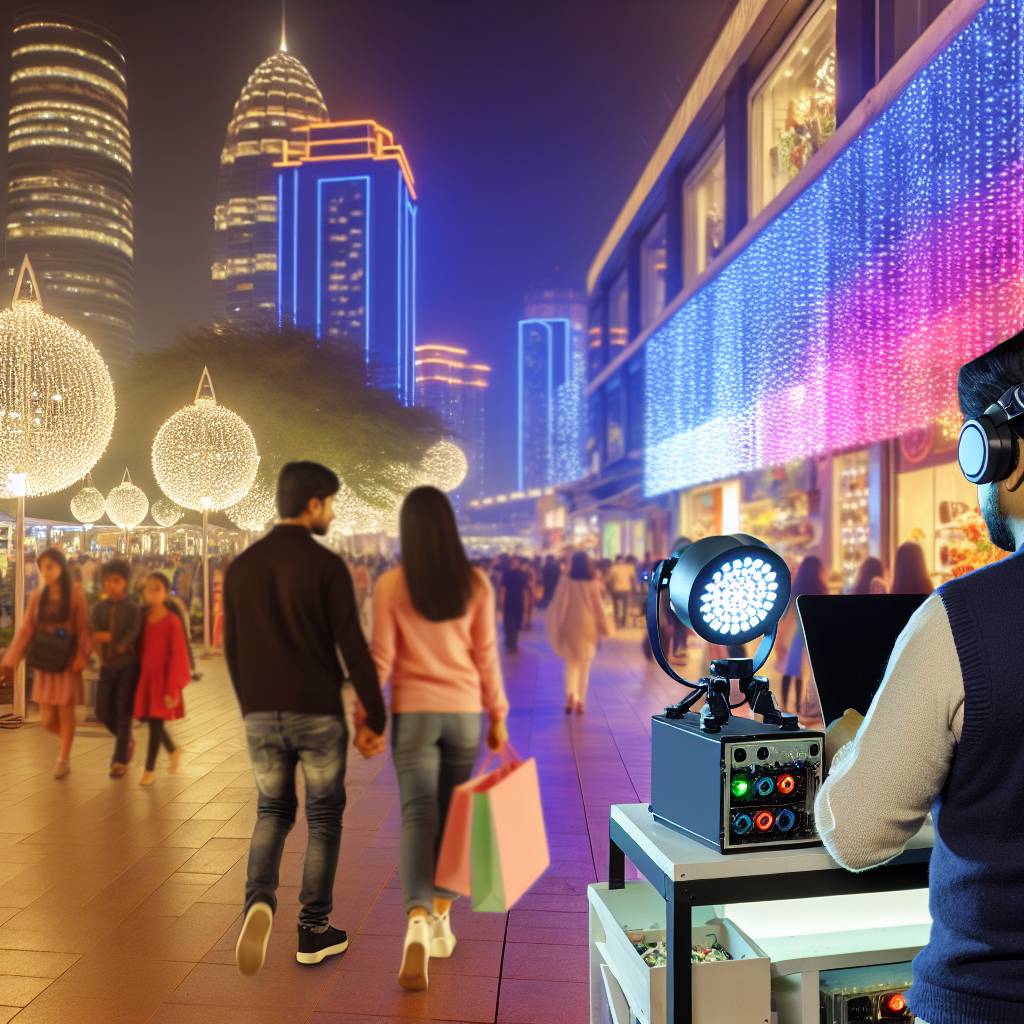Introduction
lets explore augmented reality (AR) in real estate: enhancing virtual home viewings
Definition of Augmented Reality (AR)- Overview of its application in various industries
Augmented Reality (AR) enhances our perception of reality by overlaying digital information onto our real-world environment.
With advancements in technology, AR integrates seamlessly into various sectors.
Industries such as gaming, healthcare, and education utilize AR to provide engaging experiences and improve efficiency.
In real estate, AR emerges as a transformative tool, reshaping how buyers view properties.
The significance of AR in the real estate sector
The significance of AR in the real estate sector becomes increasingly clear as it bridges the gap between virtual and physical experiences.
When potential buyers explore homes, visualizing a space can prove challenging.
Traditional methods of showcasing properties, like in-person viewings, often require time and travel.
AR addresses these limitations by offering immersive virtual experiences.
Buyers can visualize homes at their convenience.
Utilizing AR technology, real estate agents can create interactive home tours.
Clients can use smartphones or AR glasses to walk through properties from any location.
They can navigate rooms, view layouts, and inspect details without stepping foot inside.
This innovation allows for a broader audience reach since buyers can experience listings remotely.
Moreover, AR empowers users to customize spaces.
Prospective buyers can visualize furniture arrangements, paint colors, or even renovations with AR tools.
This capability provides a sense of ownership and personal connection to the property.
As a result, clients make informed decisions that enhance their buying confidence.
The impact of AR extends to real estate marketing as well.
Agents can develop engaging marketing materials that capture attention.
High-quality AR presentations elevate listings, making them more appealing to prospective buyers. Consequently, properties stand out in a competitive marketplace.
In summary, the integration of AR in real estate revolutionizes the home viewing process.
By improving accessibility and enhancing buyer engagement, AR redefines client experiences.
The future of real estate appears brighter as it embraces this innovative technology.
The Evolution of Home Viewing Practices
The evolution of home viewing practices has transformed significantly over the decades.
Traditionally, prospective buyers visited properties in person.
They relied on open houses and private showings to gauge a home’s appeal.
This process often required significant time and effort from both buyers and sellers.
Historical Perspective on Home Viewings
Home viewing practices have taken different forms throughout history.
Here’s a brief look at traditional methods:
- In-Person Showings: Buyers and agents conducted most transactions face-to-face.
- Open Houses: Agents hosted events, allowing many buyers to explore at once.
- Printed Listings: Advertisements in newspapers detailed features and prices.
- Word of Mouth: Recommendations and personal networks played key roles in finding properties.
While these traditional methods worked, they also had limitations.
Buyers often spent hours driving to multiple locations.
This time-consuming process resulted in fatigue and frustration.
The Impact of Technology on Real Estate
As technology advanced, home viewing practices evolved again.
Here are some notable changes driven by tech innovations:
We Design & Develop Websites, Android & iOS Apps
Looking to transform your digital presence? We specialize in creating stunning websites and powerful mobile apps for Android and iOS. Let us bring your vision to life with innovative, tailored solutions!
Get Started Today- Virtual Tours: Agents began offering 360-degree tours online. Buyers could explore homes without leaving their couches.
- 3D Modeling: Professionals created realistic representations of properties. This visual aid helped buyers imagine themselves in the space.
- Online Listings: Websites provided comprehensive information and images. Buyers could easily browse homes from anywhere.
- Drone Photography: Aerial views of properties and neighborhoods became popular. Drones helped highlight landscapes and features.
- Mobile Apps: Real estate apps offered instant access to listings. Buyers could receive notifications for new properties that matched their criteria.
These technological advancements made home buying more efficient and convenient.
However, they still lacked a personal touch and direct engagement.
The Emergence of AR Technology in Real Estate
Augmented reality (AR) has revolutionized the real estate industry by enhancing buyer and seller experiences.
AR merges digital elements with physical spaces, offering several benefits to all parties involved.
Here are some key advantages of AR in real estate:
- Interactive Experiences: Buyers can visualize furniture, paint colors, and designs directly within a property.
- Enhanced Visualization: AR helps buyers imagine potential renovations and transformations in a space.
- Remote Access: Buyers can explore properties from anywhere, increasing market reach for sellers.
- Time-Saving: AR eliminates unnecessary in-person visits by letting buyers filter properties remotely.
- Customizable Tours: Buyers can focus on specific areas or features of interest during virtual tours.
AR’s immersive nature fosters deeper emotional connections between buyers and properties
Buyers can feel a sense of ownership even before making a purchase decision.
The shift from traditional home viewings to advanced AR technology marks a major milestone in real estate, offering a more interactive and engaging process.
As AR evolves, its impact on real estate will grow, making the buying process more efficient and personalized.
The fusion of traditional methods with innovative technology creates a powerful synergy that transforms how buyers view and interact with homes.
By blending the physical and digital worlds, AR enhances the home search experience.
As this technology becomes mainstream, its influence on the real estate market will only continue to expand, reshaping the future of home buying. looks bright and promising.
Read: Leveraging Blockchain Technology to Automate Property Title Transfers
How Augmented Reality Works in Real Estate
Augmented Reality (AR) is transforming numerous sectors, including real estate.
This technology enhances virtual home viewings, allowing potential buyers to experience properties in engaging ways.
To understand how AR works in real estate, we first need to explore its fundamental components.
Understanding AR Technology
AR technology comprises both hardware and software essential for creating immersive experiences.
The key hardware elements include:
- Smartphones and Tablets: Most people access AR through mobile devices equipped with cameras and sensors.
- AR Glasses: Devices like Microsoft HoloLens and Magic Leap offer immersive AR experiences without needing a screen.
- Sensors: These are necessary for recognizing the environment, allowing digital content to interact with the real world.
On the software side, AR relies on platforms that process data and render information.
Key components include:
- AR Frameworks: Tools like ARKit and ARCore provide developers with resources to create AR applications effectively.
- 3D Modeling Software: Programs such as Blender and SketchUp are used to create realistic models of properties.
- Rendering Engines: Tools like Unity or Unreal Engine render environments in real time, ensuring smooth interactions.
The Process of Creating AR Home Viewings
Creating AR home viewings involves several critical steps that ensure a seamless experience for prospective buyers.
The process includes:
Capture
The first step in creating an AR home viewing is capturing 3D data from the property.
This can involve:
- Photogrammetry: This technique uses photos taken from various angles to create 3D models. Special software then stitches these images together.
- Laser Scanning: Laser scanners collect precise measurements to map the interior and exterior of a property effectively.
- Video Capture: Some real estate professionals use drones or cameras to film walkthroughs, which can later be incorporated into AR applications.
Modeling
The next stage in the process is modeling.
It entails creating a digital representation of the property.
This step demands careful attention to detail.
Various tools help in creating these models:
- 3D Modeling Software: Software like Autodesk Revit is instrumental in building detailed and accurate models.
- Material Libraries: These libraries provide textures and finishes that enhance the realism of the models.
- Lighting Simulation: Proper illumination settings add depth and authenticity to the virtual presentation.
Rendering
Rendering is the final step before presenting AR home viewings to clients.
This process involves translating the 3D model into an interactive format.
The key aspects include:
- Real-Time Rendering: Technologies like Unity and Unreal Engine allow for real-time updates, enabling users to interact with the space dynamically.
- User Interface Design: A friendly and intuitive user interface helps clients navigate the virtual space easily.
- Animation: Adding animations can enhance the experience by showing how certain elements function, such as opening doors or adjusting lighting.
Common Platforms and Tools for AR in Real Estate
To execute AR home viewings successfully, real estate professionals leverage various platforms and tools.
Some popular options include:
- Augment: This platform allows agents to create AR experiences effortlessly and lets clients view properties using their devices.
- Redfin: The platform integrates AR features, allowing home buyers to visualize properties from anywhere.
- Matterport: Known for its 3D capture technology, Matterport creates interactive 3D models that users can explore remotely.
- Floorplanner: This tool offers an intuitive way to create 2D and 3D floor plans for existing and new properties.
- ARKit and ARCore: These frameworks guide developers in building AR apps for iOS and Android devices, respectively.
Augmented reality is revolutionizing the real estate market by enhancing virtual home viewings.
By understanding how AR works—through its hardware and software components—real estate professionals can leverage this technology effectively.
We Design & Develop Websites, Android & iOS Apps
Looking to transform your digital presence? We specialize in creating stunning websites and powerful mobile apps for Android and iOS. Let us bring your vision to life with innovative, tailored solutions!
Get Started TodayThe process of capturing, modeling, and rendering properties ensures clients enjoy immersive experiences.
With powerful tools and platforms at their disposal, agents provide remarkable virtual tours that elevate the home-buying process.
The impact of AR on real estate is profound.
Clients can explore properties throughout the world without ever leaving their homes.
By embracing augmented reality, the real estate industry can meet the demands of modern buyers and renters, making the property viewing experience more accessible and engaging.
Read: Creating Virtual Property Staging Software for Real Estate Marketers
Benefits of Using AR for Virtual Home Viewings
Augmented Reality (AR) is revolutionizing the way we experience real estate.
As technology advances, AR transforms traditional home viewings into immersive experiences.
This innovative technology enhances how potential buyers visualize properties.
It offers benefits that both buyers and sellers can appreciate.
Let’s explore these advantages in detail.
Enhanced Visualization Capabilities
One of AR’s primary benefits is its enhanced visualization capability.
This technology allows for the creation of 3D models of properties.
Buyers can view these models from every angle and perspective.
- Realistic Overlays: AR provides realistic overlays of furniture and decor on a property’s image. This helps buyers visualize how their possessions would fit into a space.
- Color and Material Options: Buyers can see different color schemes and materials applied to surfaces. This personalization helps them make informed decisions based on their style preferences.
- Scale Representation: AR showcases the scale of rooms more accurately than traditional photos. Buyers can better grasp spatial relationships and sizes.
With these enhanced visualization capabilities, potential buyers gain a more precise perception of a property’s features.
This clarity fosters a greater emotional connection to the home before even stepping inside.
Increased Engagement and Interactive Experiences
AR not only showcases properties but also engages potential buyers.
This technology introduces an interactive layer to the home viewing experience.
- User-Driven Exploration: Buyers control the flow of exploration. They can focus on areas that interest them the most, which creates a personalized experience.
- Interactive Features: Many AR applications include interactive features. These might allow users to tap on items for descriptions or 3D views.
- Sharing Experiences: AR facilitates easy sharing of experiences. Buyers can share their virtual viewings with family or friends, supporting collaborative decision-making.
This Increased engagement keeps buyers interested and invested in the properties they explore.
By turning a passive viewing into an active exploration, AR helps buyers feel more connected to their potential new homes.
Time and Cost Efficiency
AR reduces the time and costs traditionally associated with home viewings.
This efficiency benefits both buyers and sellers in various ways.
- Reduced Travel Costs: Buyers can view multiple properties from the comfort of their home. This eliminates the need for extensive travel, saving both time and money.
- Faster Decision Making: With AR, buyers can quickly assess properties. This swift evaluation helps facilitate quicker purchasing decisions.
- Lower Marketing Expenses: Sellers can utilize AR in their marketing strategies. Virtual tours reduce the need for physical open houses, lowering overall marketing expenses.
This time and cost efficiency makes the home-buying process smoother and more accessible.
By streamlining the traditional practices, AR modernizes real estate transactions, benefiting all parties involved.
The Future of AR in Real Estate
As AR technology continues to evolve, its applications in real estate will expand.
We can expect even more innovative solutions that enhance the home-buying process.
- Integration with Artificial Intelligence: Future AR applications may integrate AI. This combination can offer personalized suggestions based on user preferences.
- Smart Home Demonstrations: AR can demonstrate smart home capabilities. Potential buyers will see how technology enhances their living experience.
- Community Exploration: Future AR developments could allow buyers to explore local neighborhoods. This feature offers insights into schools, parks, and amenities, improving their commitment to the area.
With these promising advancements, AR stands poised to further revolutionize the real estate industry.
It will empower buyers and sellers alike with valuable tools that enhance informed decision-making.
Augmented Reality marks a significant shift in real estate home viewing experiences.
From enhanced visualization capabilities to increased engagement, AR presents an array of benefits.
It saves time and reduces costs, creating a more efficient marketplace.
As AR technology continues to advance, it will undoubtedly play a crucial role in shaping the future of real estate.
Buyers and sellers should embrace AR’s potential.
By doing so, they can navigate the real estate landscape with greater confidence and insight.
In a world where technology shapes almost every aspect of life, AR is an essential tool for modern home buying and selling.
We Design & Develop Websites, Android & iOS Apps
Looking to transform your digital presence? We specialize in creating stunning websites and powerful mobile apps for Android and iOS. Let us bring your vision to life with innovative, tailored solutions!
Get Started TodayRead: Custom-Built Property Valuation Tools for Real Estate Developers

Read: Future-Proofing Your Home Internet for Growing Business Demands
Case Studies: Successful Implementation of AR in Real Estate
In recent years, augmented reality (AR) has transformed various industries, including real estate.
Several real estate companies have successfully integrated AR into their sales strategies, allowing potential buyers to experience properties in immersive ways.
Below, we delve into case studies that showcase how AR is revolutionizing virtual home viewings, using real-world examples and user feedback.
Examples of Real Estate Companies Utilizing AR for Virtual Viewings
Numerous companies have adopted AR technology to enhance the home viewing experience.
Below are notable examples:
- Zillow: This popular real estate platform offers AR features that allow users to visualize homes on their mobile devices. Zillow’s AR tools help buyers see how furniture and décor fit into a property.
- Redfin: Redfin employs AR to provide virtual tours of homes. The company allows consumers to explore properties remotely, enhancing convenience and accessibility.
- Realtor.com: They have integrated AR functionally into their app. Users can point their smartphones at a for-sale sign and view listing details through AR overlays.
- Matterport: This company specializes in 3D visualization and AR experiences. Their technology enables users to experience immersive virtual tours that mimic walking through a property.
- Magicplan: Magicplan offers users the ability to create floor plans and view them in AR. This feature allows potential buyers to understand spatial layouts better.
Data and Feedback from Users Experiencing AR Home Viewings
User feedback plays a crucial role in understanding the effectiveness of AR in real estate.
The following are key insights collected from users who experienced AR home viewings:
- Increased Engagement: Users reported higher engagement levels compared to traditional viewing methods. The immersive experience captured their attention effectively.
- Convenience: Many users appreciated the convenience of virtual tours. They no longer needed to travel to multiple properties, saving time and money.
- Enhanced Visualization: AR tools allowed buyers to visualize spaces in ways that traditional photos and videos could not. This capability helped them imagine the potential of each property.
- Feedback on Comfort: Some users expressed that touring homes via AR felt more comfortable. They appreciated the ability to take their time and revisit properties as needed.
- Accessible Information: Users found it easy to access valuable property information through AR. Features such as nearby schools or neighborhood statistics improved the decision-making process.
- Quality of Experience: Many respondents noted that AR provided a high-quality experience. The ability to interact with elements in 3D made the viewing process memorable.
Comparative Analysis of Traditional Viewings vs. AR-Assisted Viewings
Understanding the differences between traditional viewings and AR-assisted viewings highlights the advantages of technology in real estate sales.
Here’s a comparative analysis:
| Feature | Traditional Viewings | AR-Assisted Viewings |
|---|---|---|
| Accessibility | Limited by location and scheduling. | Accessible anytime using mobile devices. |
| Interactivity | Static, with limited opportunity for engagement. | Highly interactive with 3D models and overlays. |
| Time Efficiency | Requires travel and coordination with agents. | Immediate access to multiple listings without travel. |
| Visualization | Flat images and videos can be misleading. | 3D visualization provides a realistic sense of space. |
| Information Availability | Limited to what is provided during viewings. | Enhanced with real-time data overlays and insights. |
| Decision Making | Often slow due to the need for multiple visits. | Quicker, informed decisions thanks to immersive experiences. |
The comparisons above emphasize the convenience and innovation that AR brings to the real estate market.
Buyers can visualize properties in ways that were not possible before, making informed decisions faster.
Augmented reality is changing the face of real estate by enhancing virtual home viewings.
Companies across the industry are leveraging AR to provide immersive experiences that engage and inform buyers.
Users appreciate the accessibility and interactivity offered by AR, which significantly improve their home search experiences.
As AR technology continues to evolve, it will shape the future of real estate.
The convenience and effectiveness of AR-assisted viewings will likely lead to even greater adoption within the industry.
Future developments may integrate AI features, providing personalized recommendations or adjustments tailored to each user’s preferences.
Ultimately, the successful implementation of AR in real estate exemplifies how technology can enhance traditional practices.
It demonstrates a commitment to innovation and improved customer experiences.
The future looks promising for AR in real estate, paving the way for smarter, more effective home buying processes.
Read: AI-Powered CRM Software for Real Estate Agents: Enhancing Client Management
Challenges and Limitations of AR in Real Estate
As the excitement surrounding augmented reality (AR) in real estate grows, it is important to consider the challenges and limitations that companies face.
While AR enhances virtual home viewings, various obstacles can hinder its widespread adoption.
Below, we explore these challenges in detail.
Technical Challenges
AR technology offers many advantages, yet it comes with specific technical hurdles that can complicate its implementation in real estate.
- AR App Performance: AR applications require substantial processing power. They must overlay digital elements seamlessly on the physical environment.
If the app is slow or unresponsive, it frustrates users. A lag in the AR experience can diminish their engagement and interest. - Hardware Requirements: High-quality AR experiences depend on advanced hardware. Many potential users may not own the latest smartphones or tablets.
This lack of access limits the audience significantly. Furthermore, certain AR features may demand specialized equipment, increasing costs for both agents and clients.
User Adoption Barriers
User adoption poses a significant challenge in integrating AR into the real estate market.
To fully leverage AR, prospective buyers and agents must become familiar with the technology.
- Technical Know-How: Many users may struggle with understanding how to use AR applications. If the platform is confusing or cluttered, they may abandon it.
Clear instructions and intuitive designs are vital for user retention. Effective training can alleviate many of these concerns. - Accessibility: Not all clients possess equal access to technology. Users without reliable internet connections or smartphones compatible with AR applications face significant barriers.
Ensure that real estate professionals consider these disparities when incorporating AR experiences.
Market Readiness and Skepticism
Market readiness plays a crucial role in AR adoption.
While some consumers are eager to embrace new technologies, others remain skeptical.
- Consumer Skepticism: Some potential customers question the effectiveness of AR. They may think it is just a gimmick rather than a vital property viewing tool.
Agents must work diligently to build trust and showcase the actual benefits of AR. Ongoing education about AR’s advantages can help shift perceptions. - Real Estate Professionals’ Readiness: Many real estate agents are still adapting to digital tools. They may be hesitant to invest time and money in learning AR technology.
Comprehensive training and support can facilitate a smoother transition. Both agents and clients must feel comfortable using these tools for AR to succeed.
Despite the numerous benefits AR provides to the real estate industry, challenges remain.
Addressing technical challenges, breaking down user barriers, and overcoming market skepticism are essential steps to ensure successful integration.
By tackling these issues, the real estate industry can harness the full potential of AR technology, creating better experiences for clients and professionals alike.
As AR continues to evolve, it will be fascinating to see how these challenges are addressed.
We Design & Develop Websites, Android & iOS Apps
Looking to transform your digital presence? We specialize in creating stunning websites and powerful mobile apps for Android and iOS. Let us bring your vision to life with innovative, tailored solutions!
Get Started TodayFor now, understanding these limitations will help both users and developers navigate the exciting landscape of augmented reality in real estate.
The Future of AR in Real Estate
Augmented Reality (AR) is set to revolutionize the real estate market.
As technology advances, AR will change how buyers and sellers interact with properties.
Predictions estimate significant growth in AR applications for real estate.
This section explores potential innovations, improvements, and the evolving landscape of real estate transactions.
Predictions on the Growth of AR Technology
The real estate market is poised for a transformation through AR technology.
Several factors will drive this growth:
- Increased Adoption: More real estate agents and companies will embrace AR tools.
- Cost Reduction: As AR technology becomes more affordable, widespread adoption will follow.
- Consumer Demand: Homebuyers will demand more immersive experiences when viewing properties.
- Enhanced Connectivity: The proliferation of 5G networks will enable seamless AR experiences.
- Virtual Real Estate Market: Digital real estate, such as virtual properties in the metaverse, will require AR applications.
Market analysts expect AR’s influence will grow significantly over the next few years.
The global AR market size is projected to expand rapidly, with real estate being one of the frontrunners in adoption.
Enhanced experiences will lead to quicker sales cycles and better customer satisfaction.
As a result, businesses investing in AR will see marked improvements in their performance.
Potential Innovations and Improvements in AR Applications
AR technology in real estate is continuously evolving.
Several exciting innovations are on the horizon:
- AI Integration: Combining AI with AR will create personalized property experiences for buyers.
- 3D Home Visualization: Advanced 3D modeling will allow buyers to see potential renovations before purchasing.
- Interactive Features: Buyers can interact with properties through touch, enhancing the viewing experience.
- Remote Collaboration: AR tools will allow remote consultations between buyers, agents, and architects.
- Sustainability Features: AR can showcase eco-friendly aspects of properties, appealing to environmentally conscious buyers.
These innovations will make property hunting more engaging and informative.
AR applications will provide comprehensive data about homes.
Buyers will access information on neighborhood amenities, schools, and crime rates instantly.
Through AR, potential buyers will visualize how a home will fit their lifestyle, leading to more informed decisions.
The Role of AR in Evolving Real Estate Transactions
The real estate transaction process is often complex.
AR technology simplifies this complexity and enhances the experience.
Here are several ways AR impacts real estate transactions:
- Streamlined Showings: Agents can showcase properties remotely or through virtual tours, saving time for all parties.
- Home Staging: AR allows virtual staging, helping buyers visualize spaces without physical furniture.
- Data-Driven Insights: AR can provide buyers with analytics about property value trends and neighborhood dynamics.
- Improved Marketing: Real estate agents can create memorable personalized walkthroughs to capture potential buyers’ attention.
- Enhanced Negotiations: AR can present offers and adjustments in real-time during virtual meetings.
These advantages foster a more efficient transaction process.
AR technology ultimately leads to quicker sales and satisfied clients.
Furthermore, agents leveraging AR tools can differentiate themselves in a competitive market.
They equip themselves with the necessary tools to attract tech-savvy clients.
This adaptation opens new opportunities for business growth.
Collaborative Future in Real Estate
Walking forward, the collaboration between technology providers and real estate professionals is essential.
Such partnerships will drive the continued evolution of AR in real estate.
Together, they can explore new use cases and features.
These collaborations will ensure that AR platforms remain user-friendly and intuitive.
Here are some potential collaborative efforts:
- Workshops and Training: Training real estate professionals to utilize AR tools effectively will enhance the industry.
- Continuous Feedback: Gathering feedback from users will improve AR applications and user interfaces.
- Innovative Marketing Techniques: Combining AR with targeted marketing campaigns will attract diverse clientele.
- Cross-Industry Collaborations: Partnerships with interior designers and architects can bring comprehensive solutions to clients.
- Research and Development: Continuous investment in AR technology will keep real estate agents competitive.
As AR continues to gain traction, its role in enhancing virtual home viewings will be invaluable.
The synergy between technology and real estate professionals will create a powerful force.
Together, they will transform the buyer’s journey into a seamless and enjoyable experience.
The future of AR in real estate shows immense promise.
As technology matures, innovative applications will arise, enhancing buyer experience and streamlining transactions.
We Design & Develop Websites, Android & iOS Apps
Looking to transform your digital presence? We specialize in creating stunning websites and powerful mobile apps for Android and iOS. Let us bring your vision to life with innovative, tailored solutions!
Get Started TodayThe collaboration between agents and technology providers will be pivotal.
These changes will reshape the real estate landscape, resulting in a more engaged market.
Embracing AR technology now positions real estate professionals for success.
Those who adapt will not only thrive in competitive environments but also set new standards for property transactions.
The journey into the future of real estate is marked by technology, innovation, and collaboration.
Conclusion
Recap of the importance and effectiveness of AR in enhancing home viewings
Augmented Reality (AR) significantly enhances the home viewing experience for both buyers and sellers.
It bridges the gap between virtual and physical spaces, allowing potential buyers to visualize properties more effectively.
Traditional home viewings can limit perspectives, but AR transforms how properties are showcased.
Encouragement for real estate professionals to embrace AR technology
AR offers immersive experiences that engage users.
Potential buyers can interact with 3D models, explore various design options, and customize spaces in real-time.
This hands-on approach helps clients form emotional connections with properties
Real estate professionals can provide a unique selling point by integrating AR into their marketing strategies.
Moreover, AR reduces the time and effort involved in home searching.
Buyers can explore multiple properties from anywhere without the hassle of scheduling appointments.
This convenience accelerates decision-making and streamlines the buying process.
Sellers also benefit, as AR-infused listings can attract more interest and encourage higher offers.
It is crucial for real estate professionals to embrace AR technology.
By incorporating AR tools, they can stay competitive in a rapidly evolving market.
Clients increasingly expect advanced technology in their home-buying journey.
Adopting AR can enhance client satisfaction and loyalty.
Final thoughts on the transformative potential of AR in shaping the future of real estate experiences
As the real estate industry continues to evolve, AR holds transformative potential.
It reshapes traditional practices and introduces new possibilities for property showcase.
Forward-thinking agents can capitalize on this trend, creating memorable experiences for buyers.
In general, AR is not merely a trend; it is a game-changer in real estate.
By enhancing home viewings, it streamlines the sales process and engages clients like never before.
The future of real estate experiences lies in innovative technologies like AR, and early adoption will prove beneficial for industry professionals.
Before You Go…
Hey, thank you for reading this blog post to the end. I hope it was helpful. Let me tell you a little bit about Nicholas Idoko Technologies.
We help businesses and companies build an online presence by developing web, mobile, desktop, and blockchain applications.
We also help aspiring software developers and programmers learn the skills they need to have a successful career.
Take your first step to becoming a programming expert by joining our Learn To Code academy today!
Be sure to contact us if you need more information or have any questions! We are readily available.
Put Your Tech Company on the Map!
Get featured on Nicholas Idoko’s Blog for just $200. Showcase your business, boost credibility, and reach a growing audience eager for tech solutions.
Publish Now










